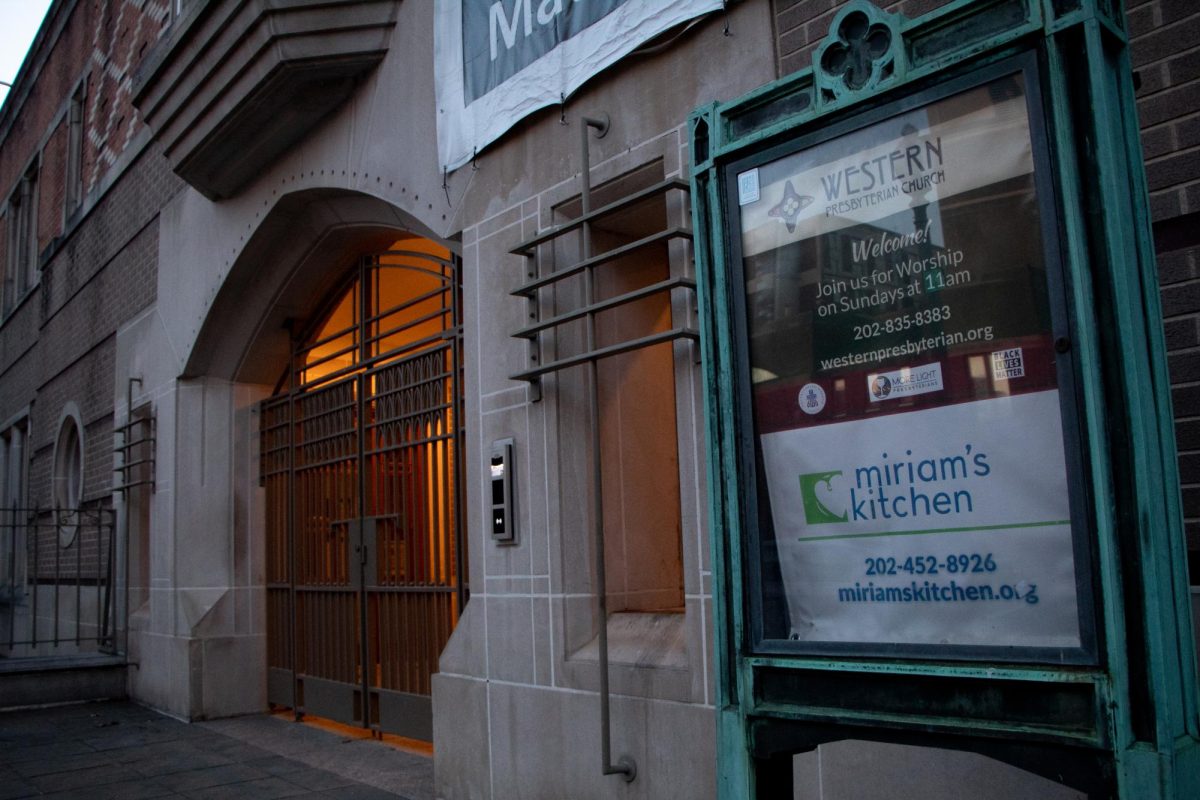Tucked in the basement of the Western Presbyterian Church, just a block west of campus sits a pillar of the District’s mission to end chronic homelessness.
Miriam’s Kitchen works with government and nongovernment groups to provide services for unhoused people across about half of the District, like its weeknight dinner services. Andy Wassenich, the assistant director of outreach at Miriam’s Kitchen, said the organization plans to expand its services when the D.C. government converts The Aston, a former GW residence hall, into a homeless shelter in the spring or summer — the first of its kind in Ward 2.
Amid an ongoing legal battle over the fate of The Aston, coupled with days of hypothermic conditions and the clearing of an abandoned encampment at 23rd and I streets, Miriam’s Kitchen’s work pushes on. The Hatchet sat down with Wassenich to discuss the development of The Aston, Miriam’s Kitchen’s services during hypothermia season and the breadth of their outreach.
This interview has been edited for length and clarity.
What does your work on the outreach team look like? What are you doing on an average day?
That looks different every day for everybody on the team, depending on their caseload. We cover a little less than half of the actual territory of the city. 25 percent of our job is doing what we call light-touch, get-to-know-you outreach, where we’re handing out supplies and just trying to build rapport with people across our territory. The other 75 percent is spent doing intensive case management with people who mostly are folks who are housing-motivated, but that’s not the prerequisite. We’re very housing-focused. To be an outreach worker, you have to be a real sort of jack-of-all-trades case manager.
What significance do you find, if any, that The Aston will be the first homeless shelter in Ward 2?
I don’t really find any particular significance in that, other than it’s probably long overdue. There’s significance that in comparison to most of the other shelters, it’s accessible. It’s not toward the reaches of the city. People can get around.
Has Miriam’s Kitchen been in touch with the Department of Human Services or any other D.C. agency in terms of coordinating services for the new shelter?
We are not the provider who’s going to be staffing it. We were involved in the advocacy for it. An existing homeless services provider has been contracted to staff it. Something that we need to think about is that people will likely be coming down for food. We’re already serving however many meals that we’re serving, so we want to be prepared. Potentially, even though meals will be provided at this shelter, people may be coming down to Miriam’s for meals.
The weather is a bit warmer now, but can you talk a bit about what your operations looked like during hypothermia season? There were 17 nights in a row of hypothermia alerts. Did that change operations at all?
For the outreach team, when there is a hypothermia alert on, our hours of operation change. Under normal circumstances, we have to have people in the field and available until 9 p.m., but when there’s a hypothermia alert, we have to have people available and in the field until 11.
That’s something that we deal with every winter. We have a long stretch. In particular, the coldest night during the week that we had snow, there were warming buses that were available. One was here down at the 21st and E encampment, and there was another one in our territory up in Columbia Heights. We were asked to make sure that they had proper signage. That proved to be very challenging because those buses were not on schedule, and there were issues with the buses at various points throughout the week that we had to troubleshoot. So that took up a lot of time.
Did The Aston delay impact your work during hypothermia season?
To the degree that you have more people outside and that you have a limited number of beds available to begin with, yeah, it has an impact. I think we just look at it like, “It is what it is.” It’s hard to say what that impact was.
Is there anything else you’d like to add?
One of the things about outreach in general is that people will often see somebody experiencing homelessness or who is really vulnerable or in really bad shape and wonder why nobody does anything. The truth is there’s very few people across the city like that who aren’t on our radars and that we’re not actually working with or trying to make a difference with. What people really need to understand is everything is self-directed, even to a degree that sometimes drives me crazy. If somebody doesn’t want to do something, the threshold to make somebody do something they don’t want to do is very, very high. A lot of the work that we do for and on behalf of people happens behind the scenes.





